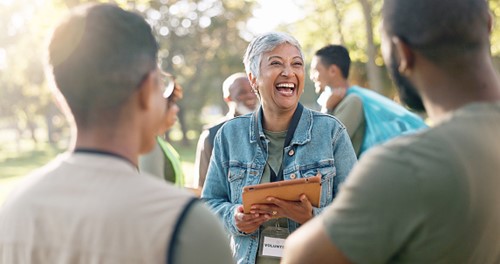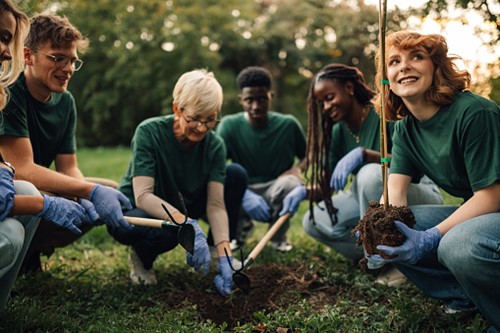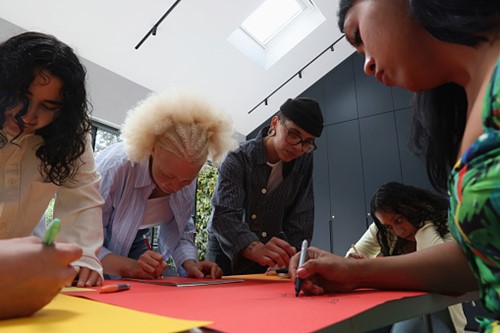A complete guide to community building


If you’re thinking of starting or running a community club or group, such as a youth club, sports club, or local interest group, you’ve probably heard the term ‘community building’. However, you may not understand what it means or know why it’s so important when encouraging people to come together.
In this guide, we explain what community building entails and its key components. We’ll examine the primary goals and functions of it, as well as provide some practical examples to help you understand the concept and motivate you to build your own community.
What is community building?

Community building involves creating a sense of belonging, connection, and shared purpose among a group of people, while ensuring that everyone feels valued and motivated to participate. For a new club or group, creating a strong community can include welcoming new members warmly, ensuring everyone has the opportunity to participate, and helping people get to know one another.
Encouraging a strong community spirit is essential for your new club or group to run smoothly in the long term. When people feel included and appreciated, they’re more likely to participate regularly, take on responsibilities, and share their experiences with friends and family.
Whether your group or club is just getting started or already established, focusing on community building will help it grow stronger, become happier, and make it more sustainable.
Community building within a group or club:
- Boosts engagement as people feel invested in the group’s success
- Increases retention as individuals are more likely to stay if they’ve built friendships
- Encourages collaboration as a connected group works better together and can achieve more
- Strengthens resilience as a supportive community and helps members stay motivated
How to build a community
While building a community may sound daunting, especially if you have no previous experience, you can achieve your community goals as long as you’re passionate and motivated. The most successful communities begin with a welcoming atmosphere, where all new members are warmly greeted, introduced to others, and made to feel included from their first day.
Group chats, newsletters, and social media channels are excellent tools for keeping community members informed and connected, ensuring people feel involved beyond in-person gatherings. It’s essential to ensure that all members are involved in making decisions, from planning events to setting goals, as this gives everyone a voice and empowers them. You should also ensure that community successes are celebrated and achievements are recognised, making everyone feel appreciated.
Social events outside of scheduled community meetings can also help to build strong connections as people enjoy an activity, meal, or drink without focusing purely on community goals.
What is the main goal of community building?

The primary goal of community building is to transform a group of individuals into a cohesive, supportive, and engaged community that collaborates towards shared objectives. When done well, it helps people feel included, valued, connected, empowered, motivated, and enthusiastic.
For those running a club, group, or community centre, the aim is to strengthen relationships so the group work well together and feels comfortable in each other’s company. It’s not just about finding new members. It’s about keeping people engaged so they want to keep showing up and participating.
What are the functions of community building?
The functions of community building are how it helps a club, group, or organisation succeed. The main functions, especially for those starting or running a community club or group, are:
1. Building connection and belonging
One of the most essential functions of community building is helping people feel a sense of belonging to something. When members feel welcome, recognised, and included, they’re more likely to stay engaged. This strengthens loyalty and turns your group into a supportive, social space, not just a place where people meet occasionally.
2. Encouraging participation and engagement
Community building helps members find ways to participate and engage with others, rather than sitting on the sidelines. Through open communication, shared decision-making, and opportunities for teamwork, people feel empowered to share ideas, volunteer, or help organise events.
3. Building trust and cooperation
Community building fosters an environment where members respect one another, communicate openly and honestly, and collaborate towards shared goals. This cooperation is essential for teamwork and achieving long-term success for the group.
4. Developing a shared identity and purpose
It gives your group an understanding of who you are and what you stand for. This might stem from common goals, such as promoting a hobby, sport, or local cause, or shared values, like creativity or well-being. A clear sense of purpose helps to bring members together and make collaborative decisions.
5. Providing support and well-being
A strong community looks out for its members, and community building fosters support through people helping and motivating one another. For many, being part of a group can boost confidence, reduce loneliness, and improve overall well-being, especially in social or volunteer-led clubs.
6. Strengthening communication
Honest and positive communication is vital when building a community, as it ensures everyone feels connected. Whether through meetings, social media, or newsletters, good communication shares information and prevents misunderstandings.
7. Sustaining growth and longevity
Successful community building helps your club or group grow and last. When people feel connected, they’re more likely to stay involved and invite others to join. This enthusiasm will keep your community engaged and happy for the long term.
What is an example of community building?

An excellent example of community building is a local youth club. A youth club brings together young people from the same area to participate in activities such as sports, arts, games, and local community projects. A youth club builds community by:
- Creating a sense of belonging among young people
- Encouraging participation in activities, fundraising, and sports
- Building trust and teamwork through group challenges or events
- Promoting positive values, like inclusion, respect, and personal growth
- Connecting the broader community by collaborating with parents, schools, and local organisations
Other examples of community building include:
- Sports clubs where people come together through fitness, teamwork, and competition
- Local interest groups, like walking groups and book clubs, which connect people through shared interests
- Volunteering and charity groups where people find ways to make a positive difference in their community
Specialist community group insurance through Ripe
Community groups are vital in ensuring your local area fosters a sense of belonging and inclusivity, which is why you may want to protect your club with specialist community group insurance.
Find out more about specialist community group insurance through Ripe or get a quick online quote today.
Please note the information provided on this page should not be taken as advice and has been written as a matter of opinion. For more on insurance cover and policy wording, see our homepage.
Please enter a valid email address.
Please Please tick one of the boxes below.
The latest news – direct to your inbox.
Subscribe for all the latest news, tips and offers from the Ripe Group. You can unsubscribe at any time. For information on how we use your data, please see our Privacy policy.
Thank you for subscribing, you’ll be hearing from us soon!

